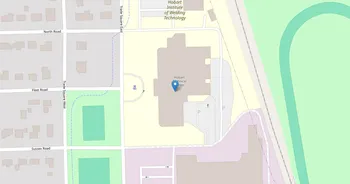Hiram College : Overview, Courses, Scholarships & Rankings
About Hiram College
A future U.S. president once studied here, a clue to the college's scholarly streak. Hiram is known for seminar-style classes, close faculty attention, and a curriculum that blends the liberal arts with career-minded study in sciences, business, and health. Students use solid labs and studios, a strong library, plus advising, tutoring, and wellness support. Short-term intensives and projects keep learning hands-on.
Campus life feels close-knit and down to earth. Clubs, music and theater, student media, outdoor trips, and intramurals keep things lively. Career services line up regional internships, and faculty networks open doors. The village setting offers room to think with quick access to big-city options. Traditions are communal. Notable alum: President James A. Garfield.
Key Institutional Details
Contact & Profile
Academic & Institutional
Academic Programs & Fields of Study
Hiram College offers 34 degree programs across 15 major academic fields, graduating approximately 166 students annually. The most popular fields by graduate volume are Business (4 programs, 31 graduates), Biological Sciences (4 programs, 28 graduates), Health (4 programs, 19 graduates), Education (5 programs, 17 graduates) and Social Sciences (3 programs, 17 graduates). Explore program details, award levels, and graduate demographics below.
Business (4 programs, 31 graduates)
Business Administration, Marketing and Entrepreneurship
| Program Name | Graduates | Gender Distribution | Award Levels | CIP Code |
|---|---|---|---|---|
| Accounting and Finance | 13 |
|
Bachelor's
|
52.0304 |
| Business Administration and Management | 9 |
|
Bachelor's
|
52.0201 |
| Marketing Management | 5 |
|
Bachelor's
|
52.1401 |
| Logistics and Supply Chain Management | 4 |
|
Bachelor's
|
52.0203 |
Biological Sciences (4 programs, 28 graduates)
Life Sciences, Biotechnology and Biomedical Research
| Program Name | Graduates | Gender Distribution | Award Levels | CIP Code |
|---|---|---|---|---|
| Exercise Physiology and Kinesiology | 14 |
|
Bachelor's
|
26.0908 |
| Biology and Biological Sciences | 10 |
|
Bachelor's
|
26.0101 |
| Biochemistry | 2 |
|
Bachelor's
|
26.0202 |
| Neuroscience | 2 |
|
Bachelor's
|
26.1501 |
Health (4 programs, 19 graduates)
Healthcare Professions, Medical Sciences and Clinical Practice
| Program Name | Graduates | Gender Distribution | Award Levels | CIP Code |
|---|---|---|---|---|
| Registered Nursing | 10 |
|
Bachelor's
|
51.3801 |
| Health Humanities | 5 |
|
Bachelor's
|
51.3204 |
| Public Health | 3 |
|
Bachelor's
|
51.2201 |
| Health and Medical Preparatory Programs | 1 |
|
Bachelor's
|
51.1199 |
Education (5 programs, 17 graduates)
Educational Sciences, Teaching Methods and Pedagogy
| Program Name | Graduates | Gender Distribution | Award Levels | CIP Code |
|---|---|---|---|---|
| General Education | 7 |
|
Bachelor's
|
13.0101 |
| Elementary Education | 5 |
|
Bachelor's
|
13.1202 |
| Teacher Education and Professional Development in Specific Subject Areas | 3 |
|
Bachelor's
|
13.1399 |
| Middle School Education and Teaching | 1 |
|
Bachelor's
|
13.1203 |
| English Language Arts Teacher Education | 1 |
|
Bachelor's
|
13.1305 |
Social Sciences (3 programs, 17 graduates)
Sociology, Anthropology and Political Science Studies
| Program Name | Graduates | Gender Distribution | Award Levels | CIP Code |
|---|---|---|---|---|
| Political Science and Government | 9 |
|
Bachelor's
|
45.1001 |
| Criminology | 6 |
|
Bachelor's
|
45.0401 |
| Sociology | 2 |
|
Bachelor's
|
45.1101 |
Psychology (1 programs, 14 graduates)
Psychological Sciences, Mental Health and Behavioral Studies
| Program Name | Graduates | Gender Distribution | Award Levels | CIP Code |
|---|---|---|---|---|
| General Psychology | 14 |
|
Bachelor's
|
42.0101 |
Kinesiology (1 programs, 7 graduates)
Exercise Science, Sports Medicine and Physical Recreation
| Program Name | Graduates | Gender Distribution | Award Levels | CIP Code |
|---|---|---|---|---|
| Sport and Fitness Management | 7 |
|
Bachelor's
|
31.0504 |
Natural Resources (1 programs, 6 graduates)
Environmental Science and Natural Resource Management
| Program Name | Graduates | Gender Distribution | Award Levels | CIP Code |
|---|---|---|---|---|
| Environmental Studies | 6 |
|
Bachelor's
|
03.0103 |
Arts (2 programs, 6 graduates)
Fine Arts, Design Studies and Creative Performance
| Program Name | Graduates | Gender Distribution | Award Levels | CIP Code |
|---|---|---|---|---|
| Applied Arts and Design | 4 |
|
Bachelor's
|
50.0499 |
| Visual and Performing Arts | 2 |
|
Bachelor's
|
50.0101 |
English (2 programs, 5 graduates)
English Literature, Creative Writing and Literary Analysis
| Program Name | Graduates | Gender Distribution | Award Levels | CIP Code |
|---|---|---|---|---|
| Creative Writing | 4 |
|
Bachelor's
|
23.1302 |
| English Language and Literature | 1 |
|
Bachelor's
|
23.0101 |
Admission Requirements & Test Scores
Comprehensive overview of admission criteria, standardized test score ranges, and application requirements for prospective students at Hiram College.
Application Requirements
Data based on IPEDS for 2022-2023 academic year. Test score ranges represent the middle 50% of admitted students (25th-75th percentile). Requirements may vary by program.
Tuition, Fees & Estimated Costs
Overview of tuition rates, housing, and other annual education expenses for undergraduate and graduate students
Financial Aid & Student Support
Summary of scholarships, grants, student loans, and financial aid statistics for undergraduate students
Student Success Metrics
Graduation rates and post-graduation earnings to help assess student outcomes and long-term value of education.
Loan Burden & Repayment Outcomes
Breakdown of loan repayment rates and student debt levels by income and dependency status.
Frequently Asked Questions
Find answers to the most common questions about Hiram College
How much does it cost to attend Hiram College?
The annual tuition at Hiram College is $26,265 for in-state students. When including room and board, books, and other expenses, the total estimated cost is approximately $41,197 for in-state students. Additional costs include room and board $11,560 (on) / $9,184 (off) and books and supplies $800.
Data based on IPEDS program completions for 2022-2023 academic year. Tuition and cost estimates are approximate and may not include all fees, personal expenses, or transportation costs.
What academic programs and degree levels does Hiram College offer?
Hiram College offers 34 academic programs across 15 major fields of study, with available degree levels: Bachelor's, Master's.
Most popular program areas include:
- Business Administration, Marketing and Entrepreneurship (4 programs)
- Life Sciences, Biotechnology and Biomedical Research (4 programs)
- Healthcare Professions, Medical Sciences and Clinical Practice (4 programs)
- Educational Sciences, Teaching Methods and Pedagogy (5 programs)
- Sociology, Anthropology and Political Science Studies (3 programs)
Data based on IPEDS program completions for 2023-2024 academic year. Numbers reflect programs where students graduated, not all offered programs.
What is the acceptance rate for Hiram College?
Hiram College has an 93.4% acceptance rate and a 13% yield rate, making it moderately selective.
Admission statistics breakdown:
- Total applicants: 1,906
- Students admitted: 1,780
- Students enrolled: 231
Data based on IPEDS for 2022-2023 academic year. Admission statistics may vary by program and application cycle.
What financial aid and scholarships are available at Hiram College?
Hiram College provides financial aid to 19% of first-time, full-time students, with average grants of $17,546 and average loans of $7,561.
Average financial aid amounts by type:
- Pell grants: $5,078
- State/Local grants: $4,218
- Institutional grants: $13,241
- Federal loans: $5,333
The university supports 191 students with grants and 144 students with loans annually.
Data based on IPEDS for 2022-2023 academic year. Financial aid amounts and percentages may vary by program, enrollment status, and individual circumstances.
What is the average salary for Hiram College graduates?
Hiram College graduates earn a median salary of $40,270 after 6 years and $54,311 after 10 years.
The salary range 10 years after graduation spans from $36,173 (25th percentile) to $74,254 (75th percentile), with top earners reaching $82,700 (90th percentile).
Data based on IPEDS for 2022-2023 academic year. Salary data reflects graduates who received federal financial aid (approximately 60% of all graduates). Actual earnings may vary significantly based on program, location, and individual circumstances.
Related Universities




Found something useful? Help others discover it too! Share with friends, on social media, or save for later - every share helps someone find the information they need.